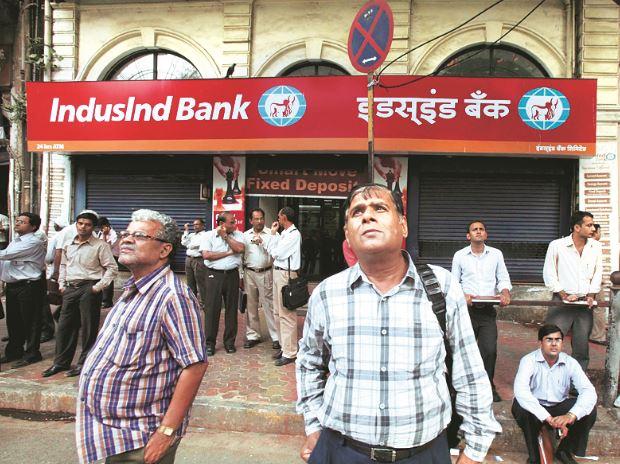Private lender IndusInd Bank’s net profit may plunge by as much as 95 per cent sequentially when it reports its March quarter earnings for financial year 2019-20 (FY20) on Monday, April 27. The number, analysts fear, may drop on the back of higher provisioning amid asset quality concerns in the wake of coronavirus (Covid-19) outbreak, and weak loan disbursement.
Analysts at Motilal Oswal Financial Services peg the bank’s profit after tax (PAT) at Rs 61.7 crore, down from Rs 360.1 crore logged in the corresponding quarter of the previous fiscal (Q4FY19). The same was Rs 1,300.2 crore in the December quarter of FY20 (Q3FY20), translating into a 95.3 per cent sequential erosion.
“Asset quality may deteriorate led by higher slippages and strain on microfinance portfolio and auto business which could dent the bank’s profitability in Q4FY20,” they wrote in their earnings preview note.
Those at Nomura, meanwhile, estimate the bank’s PAT to plummet 76 per cent QoQ to Rs 310.6 crore.
This would be the bank’s first quarterly result since its new chief executive officer (CEO) Sumant Kathpalia took over on March 24. Besides, the bank's numbers would not be comapared on a year-on-year (YoY) basis due to merger with Bharat Financial late last year.
At the bourses, the bank’s stock price of the bank has nosedived 77 per cent during the quarter under review as against a 28.56 per cent fall in the benchmark S&P BSE Sensex.
Telecom remains overhang
According to analysts at ICICI Securities, the Rs 8,800 crore-exposure to the telecom sector may cast shadow over the bank’s asset quality. That apart, slowdown in the MFI and commercial vehicle (CV) sectors could further aggravate the bank’s non-performing assets (NPA), they say.
“The bank's loan portfolio includes a relatively higher proportion of microfinance and vehicle finance loans than its peers, which are at high risk of being negatively impacted by the economic shock as customers in these segments tend to have limited buffers to withstand economic stress,” global agency Moody’s had said in a note dated April 3. IndusInd Bank had acquired about Rs 20,000 crore micro-lending book from Bharat Financial in July 2019.
The gross NPA (GNPA) and net NPA (NNPA) ratio are, therefore, seen at 2.6 per cent and 1.1 per cent, respectively for the quarter under review.
As for provisions for this quarter, analysts at Nomura expect the bank to double the provisions at Rs 2,086.6 crore from Rs 1,043.5 crore provided for in Q3FY20.
“We expect over 15 bps margin contraction with higher funding cost and lower disbursements in high yielding MFI and CV segments. We also build in higher credit cost (400bps) in Q4FY20 as the bank will front end recognition and ramp up provision cover leading to lower PAT,” they wrote in their earnings expectations note.
Deposits and loan disbursal
In its Q4 business update, the bank’s management said IndusInd Bank's net advances came in at Rs 2,09,914 crore at the end of March quarter, while deposits stood at Rs 2,02,303 crore.
The loan book, therefore, grew 13 per cent YoY, which was lower than 20 per cent growth clocked in Q3FY20 and 29 per cent reported in Q4FY19.
Due to slower loan growth and flight of deposits, analysts at HDFC Securities peg the bank’s net interest income, which is difference between the interest received on loans extended and interest paid on deposits, at Rs 2,930 crore, up 31.3 per cent YoY but a contraction of 4.7 per cent sequentially.
“Non-interest income growth may remain muted (7 per cent YoY) with flattish fees and higher treasury gains,” they wrote.
Key monitorables
Comments on deposit flux and especially that of bulk deposits, strategy for accumulating retail deposits, moratorium utilised by customers across segments in the wake of the Covid-19 outbreak, additions to the watch-list and stress in the corporate and SME segments, and rise in provision coverage ratio would be some of the factors that analysts would watch out for.
